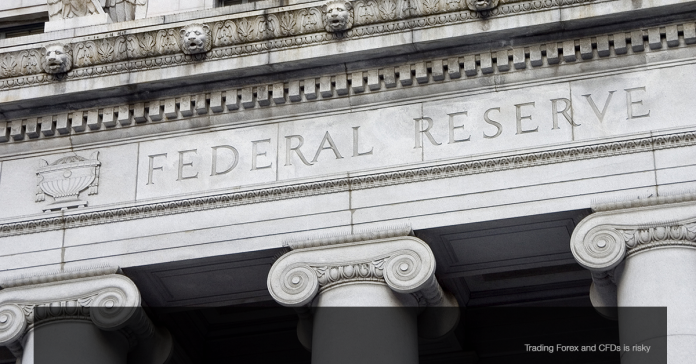The Fed Chairman sent the Dollar on a downwards spiral yesterday, with the US currency shedding as much as 0.8% in just two hours against the Euro, following Powell’s comments that the interest rate is “just below the broad range of estimates of the level that would be neutral for the economy – that is, neither speeding up nor slowing down growth.” The USA500 went up sharply on the information, as lower rates usually mean higher spending and thus higher profits.
This is probably one of the most impressive twists of the post-2008 period, publicized with gusto abiding by the forward guidance doctrine pursued by the majority of the world’s Central Banks nowadays. Six weeks ago, Powell had commented that “we may go past neutral. But we’re a long way from neutral at this point, probably.” What changed over the last month then?
As we’ve commented in the past, the main drivers of the perceived deceleration of growth in the US are the trade war and the widening fiscal balance which could mean that the public sector would have to consolidate (austerity measures for the Europeans reading this) in the near future. Furthermore, other commentators suggest that what we are really viewing in the US is the effect of the Trump tax cuts which should evaporate in 2019.
In essence, government policy has just dominated monetary policy.
The economy is taking time to adjust to the new government-imposed reality of an ongoing trade war with China, which increases material prices, leading to unwanted supply-side inflation which eats up corporate profits and essentially leads to lower stock market valuations. More of the proposed tariffs on automobiles would lead to more public sector pressure on the economy and hence decrease the number of rate hikes in 2019. To this end, following Powell’s comments, the probability of three additional rate hikes in 2019 should go further down, after having already declined to 53% last week.
Whether the policy rate is close to being neutral is a question that we need to have more information on the fourth quarter performance to assess, even though our latest analysis and the Q3 GDP data releases do not provide any support to the view that the policy rate is nearing its neutral levels. In fact, a growth rate of 3.5% would signify that the policy rate is far from being neutral at the moment.
Expectedly, the Fed does not want to wage war on the Trump administration, in hopes that the government will not pursue a similar strategy. To this end, there is no mention of what caused the rate to move closer to neutrality, since there was really nothing forcing it there, just the economy trying to adjust to the Trump-enforced changes. The Fed does not want to push it too far too fast and, even though it understands that the rates have been too low for too long, hopes that by taking it more slowly it will give the economy more time to adjust to the new normal.
Click here to access the HotForex Economic Calendar
Dr Nektarios Michail
Market Analyst
HotForex
Disclaimer: This material is provided as a general marketing communication for information purposes only and does not constitute an independent investment research. Nothing in this communication contains, or should be considered as containing, an investment advice or an investment recommendation or a solicitation for the purpose of buying or selling of any financial instrument. All information provided is gathered from reputable sources and any information containing an indication of past performance is not a guarantee or reliable indicator of future performance. Users acknowledge that any investment in FX and CFDs products is characterized by a certain degree of uncertainty and that any investment of this nature involves a high level of risk for which the users are solely responsible and liable. We assume no liability for any loss arising from any investment made based on the information provided in this communication. This communication must not be reproduced or further distributed without our prior written permission.



















